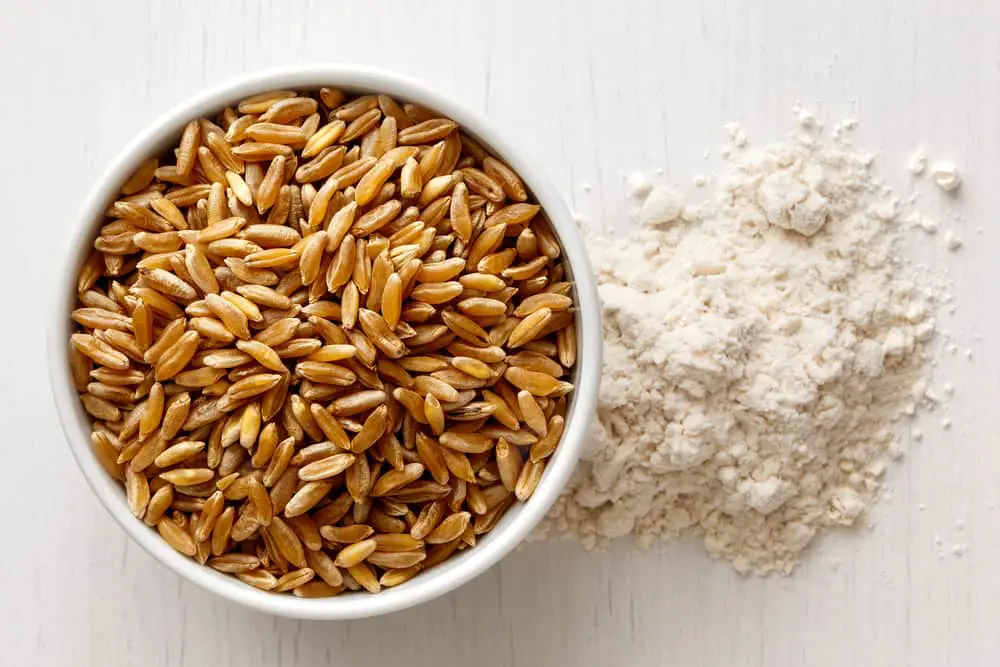All About Kamut Flour
What is Kamut Flour Made Of?
Flour made from kamut is the result of milling ancient grains, which is closely related to durum wheat used in semolina flour. This flour is considered an ancient grain, and some manufacturers guarantee that the khorasan wheat that goes into their flour has never been made into a hybrid product, so it is the same kind of grain people ate thousands of years ago.
What Does Kamut Flour Taste Like?
It has a nuttier, more earthier flavor than all purpose flour and the flours typically used in American breads and pasta.
Some also say that kamut can taste a bit buttery, which is certainly an advantage because the complex taste of butter and nuts makes for a great dish.
Uses for Kamut
Kamut has several uses when it comes to flour and baking. The flour is a good substitute for wheat.
The flour makes for great pasta and bread. Kamut is a bit more tender than typical flour, but also stretches well and holds its shape. Some compare the taste of a kamut based pasta to wheat, only a bit sweeter.
Kamut also makes really good, light bread. Just like tender pasta, bread can be tender too.
Kamut is very flexible and works in replacement of just about any flour. One relatively unknown use of this flour is breading for meats since it does a nice job of browning and crisping.
Some flours like kamut are also good used as thickeners, and kamut often finds use as a soup or stew thickener in some parts of the world.
Is Kamut Flour Healthy?

This flour provides a more significant variety of nutrition within. You’ll get plenty of nutrients like zinc, fiber, protein, and magnesium.
The larger amount of fiber will help with digestion. Kamut is also more keto friendly than other flours for those who avoid carbs, as it has only a couple of net carbs. Zero would be better, but it’s a good keto substitute for flour.
The zinc content within kamut can help support your immune system if eaten regularly, as zinc helps build antibodies.
One of the biggest every day advantages to kamut is that on average, kamut contains 40 percent more protein than regular flour. Protein is the building block for your muscles and brain!
Kamut Flour vs All Purpose Flour

All purpose flour is a blend of flour that works well for just about everything. All purpose flour has an average amount of nutrition. The big difference in flours here is that kamut flour comes from an ancient grain instead of wheat, and it offers a more nutritious kind of addition to your recipe.
All purpose flour isn’t necessarily bad for you, but the health content could be improved. The reality of most all purpose flour is that the bran and germ have been removed – and those are the healthiest parts. All purpose flour is better known for providing carbohydrates than much in terms of minerals or vitamins.
Is Kamut Flour Paleo?
Yes! The paleo diet relies on ancient grains and pursues the hunter gatherer diet of tens of thousands of years ago. Among the kinds of foods one can eat for paleo are grains like kamut.
Is Kamut Good for Diabetics?
While not clinically proven, kamut has been known to have less sugar than typical flour. The result for some diabetics is that their blood sugar won’t rise as high from eating kamut flour than it normally would from regular flour. Kamut and its flour are fairly simple and don’t often take additional sugar to make them taste better.
Is Kamut Inflammatory?
This flour has lots of antioxidants and polyphenols, which actually make them the opposite – kamut is also inflammatory. This includes for your digestive system. The amount of fiber present in kamut makes it quite easy to digest and keep you regular, especially if you have a sensitive stomach.
Does Kamut Flour Cause Gas?
No, kamut does not cause gas. In many scenarios, people consuming ‘modern wheat’ find themselves gassier because they can’t process new strains with less nutrition. Kamut tends to cause less gas than typical white or wheat flour.
Can You Make It at Home?

Using either elbow grease or the mill attachment on many food processors, you certainly can make kamut flour at home. Kamut actually comes in what looks like seeds or sprouts that look like long cereal. These can be crushed and milled to make flour in your kitchen.
Conclusion
If you are looking for a healthy and tasty alternative to your typical white flour, kamut might be a good match for you. Kamut has the taste of earthy nuts and many health benefits for everyone, including offering plenty of protein and even being mostly keto friendly.
